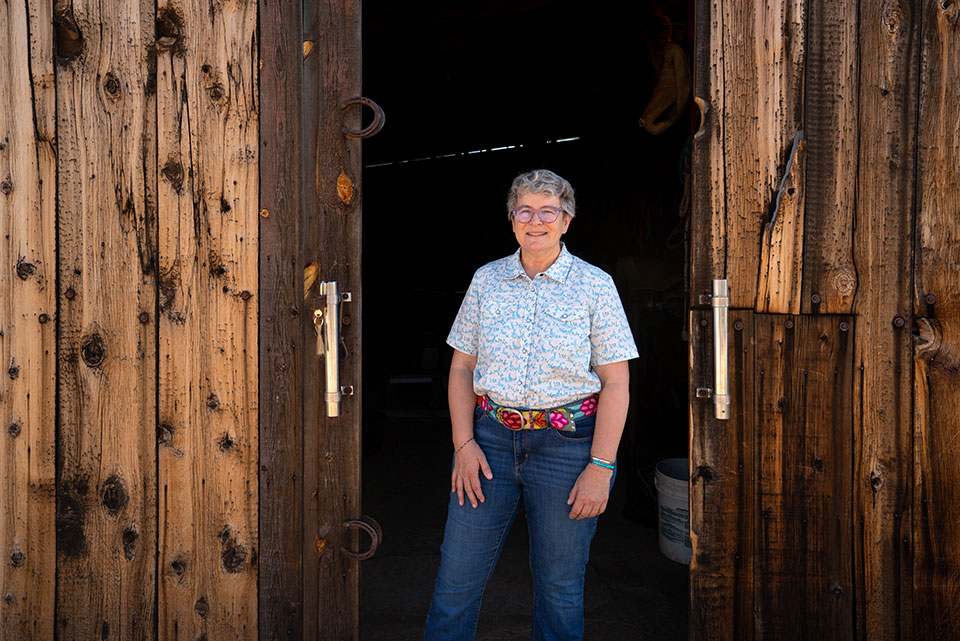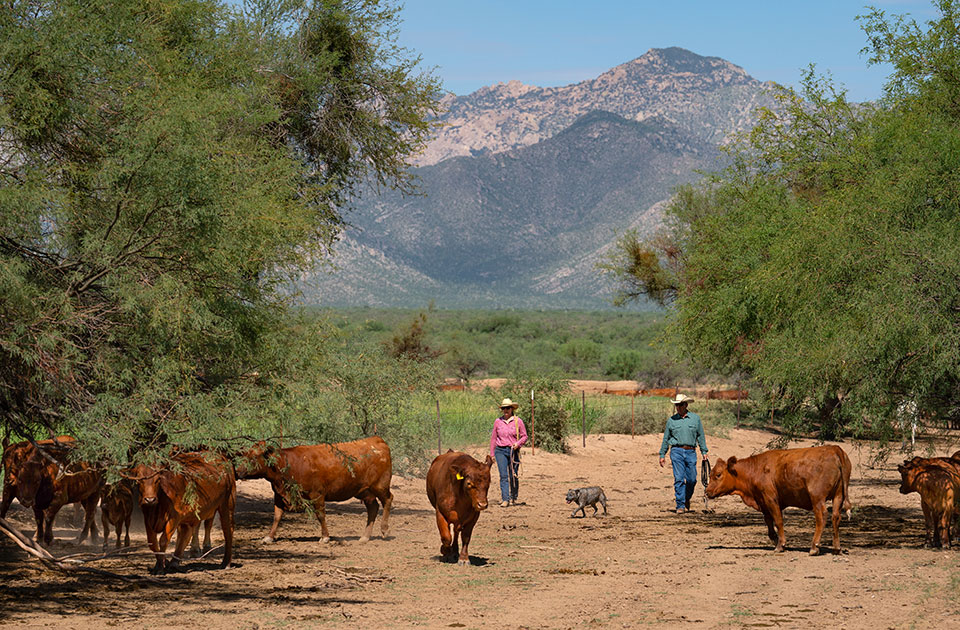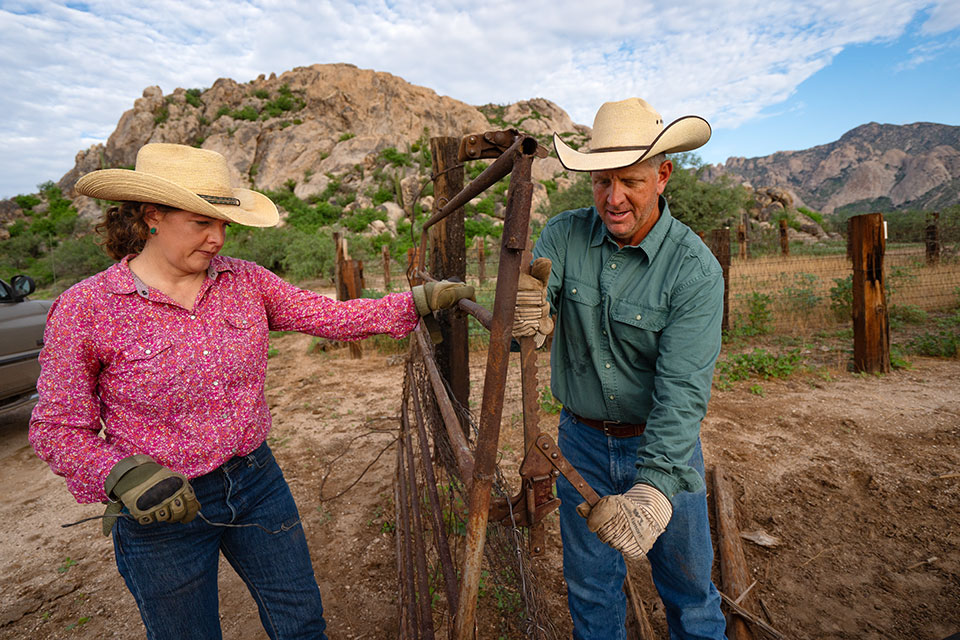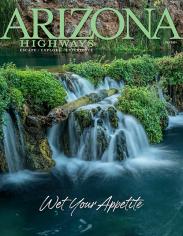Forgive, for a moment, a bit of preachiness. But in our endless quest to claim the high ground, we frequently forsake the common ground. Maybe that’s why I’m so impressed as I observe the Altar Valley Conservation Alliance’s annual community meeting.
Don’t know where the Altar Valley is? You’re hardly alone. It’s 20 miles southwest of Tucson, but in terms of modernity, it might as well be a century away. With 7,730-foot Baboquivari Peak towering along its western edge, the valley’s watershed covers about 1,000 square miles as it stretches from State Route 86 to the Mexican border. If not pristine, it’s authentic, a true Arizona landscape of working cattle ranches, mesquite stands and desert grasslands. It’s a place wild enough for herds of Sonoran pronghorns and the occasional curious jaguar.
And, for the record, it’s pronounced all-TAR, not ALL-ter.
As for the alliance, it was formed in 1995 to, among other goals, conserve the valley for future generations, bring people together and preserve this historic working landscape’s way of life.
Mary Miller, the alliance’s former executive director and a current member of the board of directors, says she often uses Tucson’s Arizona-Sonora Desert Museum as a way to explain the Altar Valley to those unfamiliar with the area. She says, for example, that many of the museum’s animals are native to the valley, while the natural dynamics that the museum interprets for visitors play out there every day — not in a pure wilderness, but in a place where people live and work. Those residents help watch over, manage and steward this landscape while doing the equally hard work of earning a living as ranchers.
“There really aren’t many places anywhere that are truly free of the touch of people,” says Miller, whose background is in natural resource management and environmental consulting. “We’re trying to find ways to combine what we need to do as ranchers with what nature needs. Parks and public entities cannot own and manage everything that has to be cared for. Working landscapes are about those places where human work and economy can coexist in a positive way with wild spaces.”
The community meeting is happening on King’s Anvil Ranch, owned by Joe King’s family; Joe’s wife, Sarah, is the alliance’s current executive director. Surrounded by a mesquite retaque fence, the main ranch compound is about a quarter-mile off the highway. Beneath an overhang where the Kings usually park trucks, the 55 participants are gathered around tables to hear presentations that will extend into the afternoon.
I’m standing in the shade of a tamarisk when Peggy, the Kings’ ranch dog they adopted after she was found wandering along Old Nogales Highway, sidles up next to me. She kicks some dust onto my pants while digging into the dirt to create a comfortable bed on the cool soil just below the surface.
The participants run the gamut: locals, representatives of the Tohono O’odham Nation, members of the U.S. Border Patrol, University of Arizona researchers and an assortment of people from federal, state and county environmental and natural resource agencies. There are ranchers wearing straw cowboy hats and Wranglers, along with wildlife biologists in REI and Patagonia — a work wear kumbaya.
If not exactly the lion lying down with the lamb — or, in the case of the Altar Valley, the jaguar with the calf — this alliance among ranching, conservation and government interests would have been difficult to imagine not that long ago.

UA research anthropologist and professor emeritus Thomas Sheridan, an alliance board member, says the organization is part of a growing national effort known as the “collaborative conservation” movement. One inspiration was the Malpai Borderlands Group, founded in 1994 to protect the region where Southeastern Arizona and Southwestern New Mexico come together with Mexico.
Sheridan moved to the Altar Valley in 1982 and watched as the relationship between the ranching and environmental communities evolved over the years. He says ranchers began to reach out to other interest groups to see if and where they could identify areas of agreement. Malpai rancher Bill McDonald had dubbed that precarious space “the radical center.”
“In my opinion, the Altar Valley alliance has been incredibly successful,” says Sheridan, whose books include Arizona: A History and Stitching the West Back Together: Conservation of Working Landscapes. “Especially in the 1990s, it was a time of incredible political polarization about land use issues, and a lot of environmentalists and ranchers were really at each other’s throats. Some of the more radaical environmental organizations wanted to get cattle off federal public land.
“Because of that polarization, there was a lot of demonization, and in getting to know the ranchers in the valley, I realized that they weren’t really the land [ruiners] they were sometimes portrayed to be. The ones who were really in it for the long haul, who were ranchers rather than land speculators, had to manage their ranches sustainably. Because their long-term economic viability depended upon having enough rain-fed fodder to sustain their herds.”
The community meeting runs for six hours, including a break for a lunch from Tucson’s Beyond Bread and potluck items provided by participants. In addition to alliance updates, there’s a presentation about the nearly extinct masked bobwhite quail, which has been reintroduced at the Altar Valley’s Buenos Aires National Wildlife Refuge, and one from Desert Fence Busters, a group that removes obsolete barbed-wire fencing to allow wildlife to move more freely across the land.
But a presentation about stinknet, an invasive South African plant you’ll be hearing plenty about in the coming years, inspires the liveliest conversation. Stinknet is nasty stuff, notwithstanding its pretty blossoms that resemble little yellow golf balls. Which is to say, little yellow golf balls teed up for environmental mayhem.
The takeaway: If you went into a lab to concoct a noxious and aggressive plant, it would be tough to top stinknet, which earns its decidedly unflattering name from a turpentine-like odor that can trigger allergic reactions. One presenter, UA student Doan Goolsby, says he wears a mask and gloves when removing stinknet because direct exposure can cause flu-like symptoms. Others report that stinknet gave them blisters.
The good news is that stinknet comes out of the ground easily and isn’t drought tolerant, meaning it dies off before monsoon storms begin. The bad news is that those storms can easily disperse the seeds, so what starts as an isolated stinknet incursion one year can turn into a full-fledged invasion the next. And while the plant may be easy to pull up from the base of the stem, you still have to be careful — when the delicate flower heads break, they send out thousands of seeds that can live for five years.

generations. | David Wallace
The stinknet talk sounds a tad wonky, but it’s yet another concern for the alliance as it tries to protect a landscape that looks rugged and unchanging but actually is far more vulnerable than it appears. The need for effective brush management, via managed wildfires and prescribed burns, was central to the alliance’s founding. Erosion and the loss of productive topsoil threaten wildlife habitat and the grasses cattle need. Native mesquites have spread widely from their original habitat along drainages, growing in thick stands that guzzle water and gobble up the ground where grasses once thrived. Once a grassland, Altar Valley has become a shrubland.
Everything is connected: Controlling mesquites reduces fire risk and promotes the growth of grasslands. The grasslands better maintain topsoil and provide forage for cattle and habitat for wildlife. And the Altar Valley is historically a large floodplain, but its drainages have become more deeply incised, meaning that when it rains, the runoff flows hard and fast, leading to yet more erosion and the loss of water.
“We always want more rain,” Miller says. “But sometimes the rains come too fast. If we can try to harness the natural forces and start to rebuild the soil, the water can soak into the ground, not just run off. We’re not trying to hold onto the water; we’re just trying to let it do as much work as it can before flowing downstream.”
Restoring these natural processes demands hard, physical work, and Miller believes the alliance’s on-the-ground volunteer projects — such as brush clearing, vegetation management and restoration of arroyos — forge bonds that strengthen the community.
“People within the agencies and the ranchers started to have better relationships — they got to know each other,” she says. “They sat on the ground, all hot and sweaty, and had lunch together. They picked up rocks together. Maybe I’m being a little poetic here, but there were friendships that got going. The alliance found its real role in being an entity that helped bring people together to talk and learn, but also get things done on the ground.”
The morning after the meeting, I return to King’s Anvil Ranch to talk with Sarah and Joe King. Peggy greets me like we’re old pals, and Sarah and I sit down in the ranch house, parts of which date to the early 1900s, and wait for Joe to return from his work on the ranch.
Sarah lived “all over,” in her description, as the family followed her father’s jobs to Wisconsin, Mexico City and New Jersey. She first saw the Altar Valley on vacations to Elkhorn Ranch, the guest ranch owned and operated since 1945 by the family of Miller’s husband, Charley.
Now a Red Angus cow-calf operation, the 55,000-acre King’s Anvil Ranch dates to 1895. Joe is the fourth generation of his family to run the ranch and still sometimes finds himself fixing barbed-wire fencing that his great-grandfather Manuel King originally put in.

As the story goes, Manuel left California as a teenager to get away from a stepmother he didn’t like and hopped on a train for Arizona. He went to work for an Altar Valley cattle operation that later shut down, and Manuel and the other ranch hands were paid off in cattle. That gave him his start, and he began to claim homesteads in the valley and surrounding mountains. In 1908, he bought the site of today’s main ranch compound, which was owned by a blacksmith — giving King’s Anvil Ranch its name.
Joe comes in, and the Kings show me family pictures Sarah scanned from an old family album. The ranch’s history and the King family’s lore are inseparable, and as Joe starts telling the story of an aunt (actually his father’s cousin), Sarah suddenly interrupts.
“It’s raining!” she declares. “Kind of hard raining. Weird. Sorry, but that’s what happens around here when it rains. We get totally derailed. Carry on with your story, Joe.”
Joe resumes: “My aunt was 8 years old and told her dad, ‘I am going to ride with the cowboys today. I’m not going to school. I’m done.’ This old rancher looks at her and says, ‘Little girls wear dresses!’ But she put on a pair of pants and rode roundup that day. As far as feminism goes, that’s 1940 Arizona! Some 8-year-old girl telling off her father and saying, ‘This is what’s going to happen.’ ”
We head out for a walk to Altar Wash and come upon a cow that’s slowly recovering after it injured its leg delivering a calf that didn’t survive. For a time, the cow couldn’t even stand up, but the Kings are encouraged by its progress. “She stood more quickly than I ever anticipated,” Joe says as the cow, sporting ear tag 353, looks at us with curious eyes. “She had no control over her back right leg. I couldn’t tell if it was knocked out of joint or broken. Now she’s walking with it, even though she’s got a weak fetlock.”
“She bobbles every once in a while, but for a time, there was no improvement,” Sarah adds. “Even if it’s not great, but you’re seeing an improvement, then that’s OK. But she was really packing that thing around.”
We reach the deeply cut wash, and the scale of the Altar Valley is almost overwhelming — a big country made brooding by the dark clouds massed over the Quinlan and Baboquivari mountains.
“People can have the feeling that when they first look at the desert, it’s kind of gray-green and not very interesting,” Miller says. “But the more they see it and know it and learn about it, the more hooked they become. The desert becomes a place they return to. The spaciousness and wildness are rejuvenating. It’s empty, but full.”
For more information about the Altar Valley Conservation Alliance, visit facebook.com/AltarValleyConservationAlliance/.

